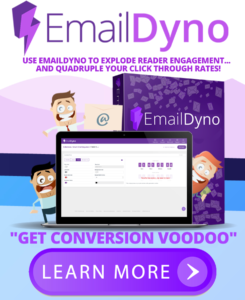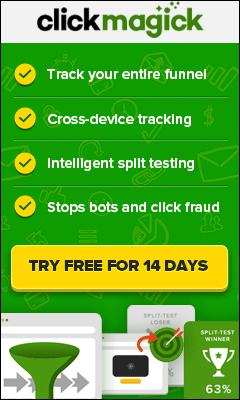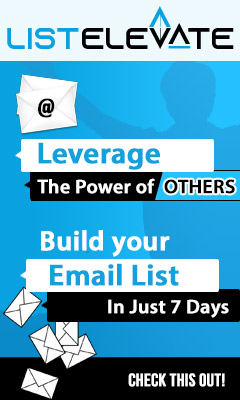Four Secrets for Beating Your Affiliate Competition
Four Secrets for Beating Your Affiliate Competition and Generating Bigger Commission Checks
Look around your niche – you’ve got a boatload of affiliate competition, don’t you? Depending on your niche and what you’re selling, you may be competing with dozens, hundreds or even thousands of other people who are selling the exact same thing as you. And that doesn’t even count all the others who’re selling similar but different competing products.
But hold up for a second…
The vast majority of these “competitors” aren’t really competitors at all. Many of these marketers (and I use that term loosely) put up a website, paste ads all over the place, and consider that a good job.
You know what? You can beat that, easily.
And what about those affiliates in your niche who are good at what they do? You can beat them too. You just need to develop a strategy for attracting your prospects’ attention, building good relationships with them, and then promoting desirable offers.
Check out these keys for implementing this strategy…
Become a Trusted Advisor
You may be thinking of yourself as an affiliate marketer – if so, it’s time for a bit of a mindset tweak. Instead of thinking of yourself as a marketer, you want to start thinking of yourself as a trusted advisor.
If you think of yourself primarily as a marketer, then you’re going to do things that primarily benefit you. If you start thinking of yourself as an advisor, then you’re going to have your prospects’ best interests at heart. Not surprisingly, when your primary goal is to help others, you end up benefiting greatly too. And I’m not just talking about feeling good because you’re helping others. I’m talking about benefiting by pulling down huge commission checks.
Look around, and you’ll see that many of the affiliates in your niche are using the “churn and burn” strategy of platform building. They promote every new product that comes down the pike, often using copy-and-paste ads, and often without even properly reviewing the product. Their promos just become white noise in a market full of other people pushing the same products using the same ads.
This is the first point where you differentiate yourself from your competitors. Instead of pushing every new thing that comes down the pike, you’ll want to honestly assess these products. Are they good solutions for your audience? If not, don’t promote them. If so, let your audience know.
Your audience is going to catch on very quickly that you’re not the type of affiliate who blindly promotes everything. They’re going to see that you only promote the BEST products, and you always do so honestly. You tell the truth about products, whether you’re getting a commission for them or not. Sometimes you even promote free products because they are the very best solution for your audience.
If you’re having troubles making the mindset change from “marketer” to “advisor,” there is a trick to make it simple. Before you send out a single piece of content or recommend any product, ask yourself if you would send this content or make this recommendation to your best friend. If the answer is “yes,” then send it to your audience. If the answer is “no,” then you need to create high-quality content and make recommendations that you’d be proud to pass along to a friend.
On a related topic…
Build Your Own Platforms
As you can see, one of the big keys to this strategy is to build trusting relationships with your audience. But you can’t do this if your audience only sees your content and recommendations sporadically. That’s why you need to build a platform of prospects and customers.
Yes, you can and should build up your social media platforms, as that’s a good component of your overall marketing strategy. But when it comes to your primary platform, it needs to be something you own and control. Namely, you need to build your own mailing list.
So yes, get on Twitter. Start a Facebook group. Do blog marketing. But when it comes to building a platform, you want to put 100% of your resources into building your own list. It’s the best platform for relationship building, as you can use your autoresponder and a set of evergreen emails to do a lot of the relationship building for you. Just be sure you’re sending out high-quality content and product recommendations in every email you send.
In addition to relationship-building, you also want to use your platforms to establish your expertise. Give your audience tips, strategies, ideas and more that they’re not getting anywhere else. Pick a topic in your niche, and become THE expert on that particular topic. And prove every day that you’re the expert, by sharing unique solutions and ideas. If people get ideas from you that they’re not getting anywhere else, you can bet they’re going to very quickly become loyal customers.
Which brings us to the next point…
Add Value to Every Offer
Developing trusting relationships with your audience and establishing your expertise are going to go a long ways towards helping you generate bigger commission checks. Nonetheless, when you promote an affiliate offer, you’ll want to further differentiate yourself from your competitors by offering a valuable bonus.
The key to this strategy is to offer a bonus that’s not just related to the main product, but ideally it should be something that people can use to make the main product better, faster or easier.
For example, if the affiliate product you’re promoting is a course on video marketing, then you might offer an app that makes it quick and easy for people to create and edit videos.
If you’d like to ramp up this strategy even more, then put a limit on your bonus. E.G., “This offer is good for the next 48 hours only.” You’ll find that adding a countdown timer alongside this offer further boosts urgency and conversions. You can even add a dynamic countdown timer to your emails if you use EmailDyno.
Engage Your Prospects
Your goal first and foremost in everything you do is to work on engaging your prospects’ attention. Your prospect only has a limited amount of time and attention, so these are scarce and valuable resources. Everyone else in your niche is competing for your prospects’ time and attention as well. The person who engages the prospect is the one who wins – and the winner get the attention, the clicks and the sales.
This means every piece of content you send out needs to speak directly to your prospect in order to grab attention. In particular, you want to focus on:
- Email subject lines.
- Email openers.
- Blog article titles.
- Titles of your bonus products.
- Headlines on lead pages and sales pages.
- Primary benefits on lead pages and sales pages.
Items like email subject lines should seek to share benefits and arouse curiosity too, if possible.
Any content you share should further engage attention by being unique, solving a specific problem, and created in a way that holds the audience’s attention.
One way to help you get attention in your emails is by personalizing your content. In other words, you want to use the recipient’s name in the email – but don’t overuse it, as your prospect will tune you out if you do that.
Most marketers use the recipient’s name in the salutation of the email (e.g., “Hi [first name]”). That’s okay, but it’s not ideal for two reasons:
1) You’re using up valuable “email preview” content greeting the recipient, when you could be using that space with clever sales copy to catch the recipient’s attention. This tends to drive up clicks, opens and reads.
2) Many recipients will simply ignore the salutation of the email since it’s so common for their name to appear in that place.
So, when SHOULD you use your recipient’s name? The key is to use it at a moment when it could have the greatest impact.
For example, you can use the recipient’s name in the call to action. E.G.. “Bill, click here now to claim your free trial.”
Another impactful way to personalize emails is by including the recipient’s name on an image. Think of it – when was the last time you saw your name on an image inside an email? Probably the 12th of never?
Same with your prospect – they’ve rarely if ever received an email with a personalized image. As such, this sort of novelty really captures attention.
If you’d like to see an example of how to do this, along with the tool you can use to make this happen, click here…
Now a few parting thoughts…
Conclusion
If your plan is to be a mediocre affiliate pulling in mediocre commission checks, then by all means do what everyone else is doing. However, if you’re looking to become a super affiliate, then you’re definitely going to want to put the above tips and ideas to work in your affiliate business.
Remember, the one who holds the prospect’s attention is the one who’s going to get the sale.
That’s why job #1 for you is to capture attention through engaging, high-quality content across all your platforms. In particular, be sure every email you send seeks to build relationships, establish your expertise, and engage the prospect.
If you’d like to up your engagement game (which automatically ups your affiliate game as a whole), then you’re definitely going to want to check out EmailDyno.
This amazing little tool lets you drop dynamic, engaging content into every email you send. This dynamic content includes:
- Countdown timers.
- Video image overlays.
- Personalized images.
- Surveys.
- Ratings.
- And more.
To see the full list of what all EmailDyno can do, and to see examples of it in action, you’ll want to check out this page here…
The tool works with your existing autoresponder, and using it is as easy as copying and pasting a line of code into your emails.
It’s the best way I know to get your subscribers’ attention in really unique and surprising ways, so be sure to click the link above to check it out now!





